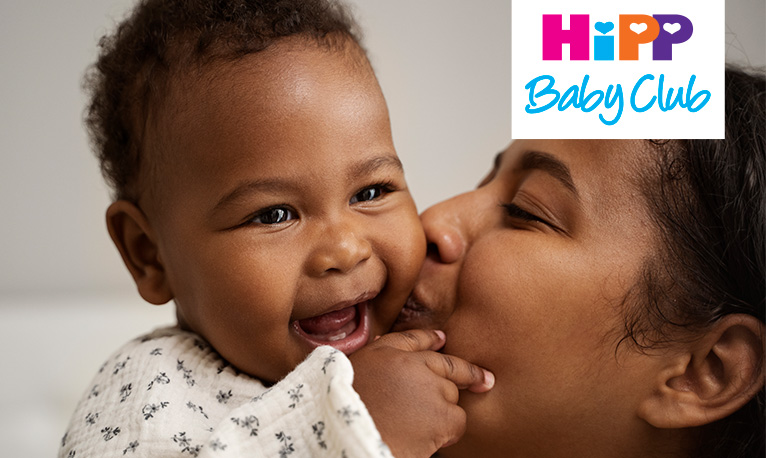The power of skin-to-skin
Newborn | | Louise Broadbridge
Skin-to-skin contact has a whole host of benefits for a newborn baby. It is also a great way for parents to bond with their child in the early days and take some much-needed time out to rest, recuperate and focus on their new arrival.
What is skin-to-skin contact?
Skin-to-skin contact usually refers to laying a baby directly onto their mother’s bare chest straight after birth. However, babies can also enjoy skin-to-skin time with their fathers. It is highly beneficial for both infants and parents throughout the early days and weeks.
Being held skin-to-skin by a parent is extremely comforting for a baby and helps them to get used to being outside of the womb and in the wider world, which can be an intimidating place when you’re a newborn! It also helps encourage breastfeeding and is a vital part of UNICEF’s Baby Friendly Initiative.
What are the benefits of skin-to-skin?
Calming effect
Holding your baby so your bare skin touches theirs will be a calming experience for both of you. It’s a great way of getting used to each other and is an important part of the initial bonding process. They will also be able to hear your heartbeat, which has been the soundtrack of their life up until now.
Skin-to-skin contact also stimulates the release of oxytocin, which many people call the love hormone. This can mean you feel a rush of love and happiness, although not everyone experiences this.
Oxytocin isn’t just fantastic for bonding though; it also helps the mother’s uterus contract again after birth, which will reduce bleeding. As well as boosting your oxytocin levels, skin-to-skin reduces how much of the stress hormone cortisol you have in your body, helping you to feel calm and at peace.
Studies have found that skin-to-skin contact after birth leads to less crying, as the baby is calm and settled and in a quiet alert state. It also reduces the risk of hypoglycaemia, where blood sugar levels drop too low, as it raises baby’s glucose levels.
Bonding
At this point in your baby’s life, physical touch is one of the few things they will understand. Skin-to-skin contact, will also help your baby start to recognise your unique scent, something they will then find comforting in the coming weeks and months.
Temperature regulation
As babies struggle to regulate their own temperature, skin-to-skin is a really helpful way of keeping your little one warm in those first few hours after birth. It also helps your baby regulate their breathing and blood pressure and assists the development of their immune system.
Friendly bacteria
Keeping your baby close to your bare skin will expose them to your friendly bacteria. This will help provide them with protection against infection.
Breastfeeding
As skin-to-skin helps stimulate the production of breast milk, it is particularly beneficial for breastfeeding mothers. Regular skin-to-skin contact throughout your baby’s first few weeks will help boost your milk supply.
Your baby will start to smell your milk and it will help trigger their interest in feeding. If you are planning to breastfeed, initiating a feed in the first hour after birth when your newborn is in a quiet alert state will increase your chances of feeding successfully.
When should I start skin-to-skin with my baby?
If possible, skin-to-skin contact should be initiated as soon as your baby arrives, and continued for at least the first hour after birth. Your midwife or another medical professional will support you in drying your baby and then placing them directly onto your chest. You will then be covered with a blanket to keep you both warm, as newborn babies can lose heat quickly and are often unable to control their own temperature.
Ideally, skin-to-skin contact should continue for at least an hour. This is a great opportunity to try to breastfeed for the first time, if that is how you are planning to feed your baby. As well as making sure your baby is in a good position for breastfeeding, skin-to-skin contact encourages milk production as it stimulates the release of the hormones oxytocin and prolactin.
Can I practice skin-to-skin if I have had a c-section?
Most hospitals are now keen to encourage skin-to-skin contact wherever it is medically possible and safe to do so. If you have had a difficult birth and you or your baby require medical attention or extra care, it may not be possible straight away.
Having a caesarean section does not mean that you won’t be able to practice skin-to-skin though. The midwife in theatre with you can support you by bringing your newborn as soon as baby is born and laying them onto your bare chest.
Your baby will usually be removed when you are being transferred from the operating theatre to a bed on a ward but staff should work with you to initiate skin-to-skin contact again as soon as you are settled. If practicing skin-to-skin is important to you, it is a good idea to include it on your birth plan and make sure those caring for you during your labour know your wishes.
You will have to wear your surgical gown so it opens at the front and your baby will usually be placed in a higher position on your chest to avoid your wound from the surgery.
What will happen during skin-to-skin?
When your baby is born, they will usually let out a distinctive cry as they arrive into the world. Once they are placed on your skin, they will usually lie very still and appear relaxed and quiet.
Gradually, your newborn will start to wake up and open their eyes. They even show some interest in your voice, which they will be used to hearing from when they were in the womb.
You may notice some small movements and, if left uninterrupted, your baby will appear to move towards your breast as they follow an important post-birth instinct. Once at your nipple, they may start smelling, licking or nuzzling the area and may even manage to attach themselves.
Don’t worry if your baby doesn’t successfully self-attach; your midwife can help you with positioning and make sure your newborn is latched on well for their first feed. After your baby’s first feed, they will often fall asleep as they recover from the ordeal of being born and they may be very sleepy for the next few hours.
What if I can’t do skin-to-skin straight away?
There will sometimes be circumstances where it is not safe or practical for you to practice skin-to-skin care immediately after your baby’s birth. The priority of medical professionals must always be the health and safety of you and your baby.
However, your newborn will benefit from skin-to-skin contact whenever you are safely able to do so. Sometimes known as kangaroo care, skin-to-skin contact is considered an important part of neonatal care for premature babies and your little one will reap the benefits even if you have had to wait a while before you can enjoy your first cuddle.
You can carry on practicing skin-to-skin with your baby for as long as you want to. You may find it helps calm your little one when they are upset, even months after they are born.
Can my partner practice skin-to-skin?
Skin-to-skin contact is important for anyone who will be an important figure in your baby’s life. Your partner can enjoy skin-to-skin cuddles too and both will benefit from the experience.
In fact, if something happens during birth which means you are unable to hold your baby straight away, it is a great idea for your baby’s father or your birth partner to practice skin-to-skin so your little one still benefits.
Encourage your partner to wear a top which unbuttons at the front as this will make skin-to-skin after baby is born much easier. You should both avoid wearing any strong perfumes or aftershaves – your baby will respond better to your natural scents.
Baby massage
During their time in the womb, especially in the last few weeks of pregnancy, babies become pretty squished and can often feel a little stiff. Enjoying regular baby massage sessions can really help to relieve any little tensions your baby may have picked up and can also help to ease things like trapped wind and colic.


